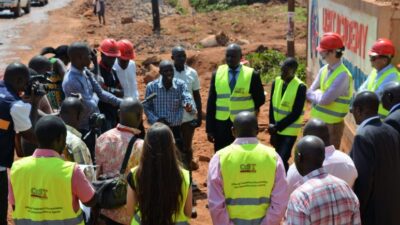Uganda’s mortgage market remains underdeveloped, with penetration around 2% of the population despite efforts by financial institutions to expand home loan products. The reliance on informal incomes and high interest rates limits access to formal financing and keeps many potential homeowners in the rental market.
Market Dynamics
- Informal Sector Dominance: Over 70% of Uganda’s workforce operates in the informal economy, characterized by variable incomes and lack of formal payroll documentation, complicating traditional credit assessments.
- Interest Rate Environment: Commercial mortgage rates hover between 16% and 20%, substantially above peer rates in East Africa, deterring uptake.
- Product Innovation Attempts: Housing Finance Bank and Centenary Bank introduced tiered mortgage products in 2023, offering down payments as low as 15% and flexible tenors up to 25 years, yet these have had limited impact due to underlying income verification issues.
Search & Media Signals
- Google Trends: “mortgage Uganda” searches peaked at 68/100 in June 2024, corresponding with the finance minister’s budget address proposals to cap ceiling rates.
- Broadcast Coverage: RadioOne’s “Homeownership Today” series and NTV Uganda segments featured case studies of pilot micro-mortgage schemes targeting teachers and healthcare workers.
Challenges
- Eligibility Constraints: Formal employment requirements exclude informal workers, while high property valuations require large down payments (20–30%).
- Credit Scoring Limitations: Traditional credit bureaus capture only 25% of adults, leaving potential borrowers without a documented credit history.
- Regulatory Gaps: Lack of collateral frameworks for movable assets (e.g., equipment financing) limits creative underwriting approaches.
Innovative Solutions
- Alternative Data Scoring: Fintech startups like LendWise are piloting mobile money transaction-based credit assessments to qualify informal earners.
- Rent-to-Own Programs: Real estate firms partner with microfinance institutions to structure incremental equity acquisition models, where renters convert a portion of rent into down payments over time.
- Government Guarantee Schemes: The Ministry of Finance proposed a partial credit guarantee fund for mortgages in the 2024/25 budget, aiming to de-risk lending to targeted groups.
Investor Implications
- High Unserved Demand: With a potential addressable market exceeding 500,000 households, mortgage innovation can unlock significant value.
- Partnership Opportunities: Collaborations between banks, fintechs, and property developers can create integrated offerings that bridge documentation gaps.
- Regulatory Advocacy: Engagement with policymakers to refine guarantee schemes and enable movable asset collateralization can broaden market access.
Conclusion
Uganda’s mortgage market stands at a crossroads, with clear demand hindered by systemic barriers. Continued product innovation, regulatory support, and alternative credit models are essential to expand homeownership. Progress on the proposed credit guarantee and broader fintech integrations by 2026 will be critical to transforming Uganda’s housing finance ecosystem.



